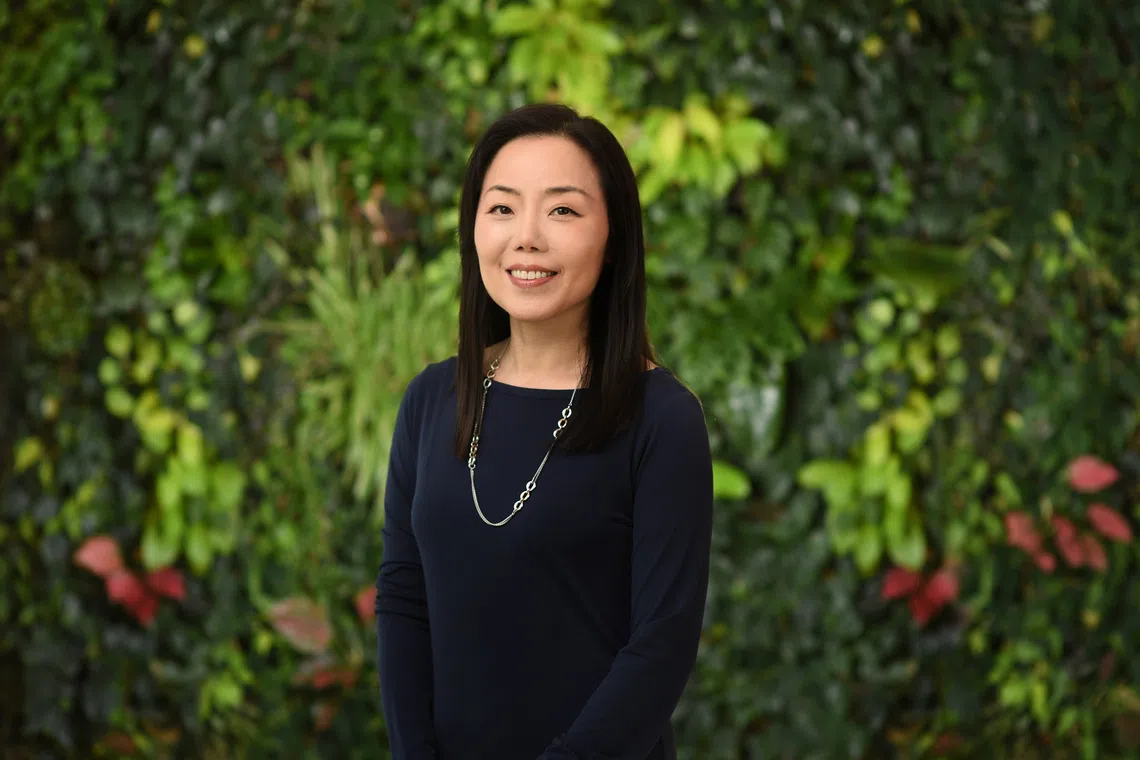Banh mi instead of sandwiches: Temasek’s sustainability chief on boosting investor interest in Asia
Sign up now: Get ST's newsletters delivered to your inbox

Temasek’s chief sustainability officer Park Kyung-ah says investors can be encouraged to invest in emerging markets if there are financial instruments they are familiar with.
PHOTO: TEMASEK
Follow topic:
SINGAPORE – Global investors often prefer to put their money in markets they are familiar with, so speeding up the flow of capital for sustainable investments in emerging markets like Asia would require the development of innovative financial tools.
“Most often, people like to go to familiar markets. If they can make the same return, then it’s a lot easier than going to a new market,” said Ms Park Kyung-ah, the chief sustainability officer of Singapore’s investment company Temasek.
She was talking to The Straits Times in the latest episode of Green Pulse, an environmental podcast series, that aired on Oct 21.
According to a 2024 report by the International Energy Agency, the South-east Asian region attracted only 2 per cent of global clean energy investment
But Ms Park said investors can be encouraged to invest in emerging markets if there are financial instruments they are familiar with.
She cited the infrastructure asset-backed securitisation efforts by Clifford Capital
An infrastructure asset-backed security is a financial product that lets investors put money into large infrastructure projects, such as renewable energy plants, without owning the assets directly.
This is done by bundling the project’s estimated future cash flows, such as from electricity sales, into products known as “securities”, which are then sold to investors.
“These are the types of innovations that you need, to be able to crowd in mainstream capital (from those) who may be less familiar with specific emerging markets,” Ms Park said.
Such solutions aim to convert something unfamiliar to investors into terms they are more acquainted with – akin to introducing a local twist to a well-known dish, such as the banh mi, a Vietnamese sandwich.
Capital is in many ways like water, Ms Park said. “It flows to where there is least resistance.”
The podcast episode was published ahead of the United Nations climate change conference COP30, slated to be held in Belem, Brazil, from Nov 10 to 21.
A major theme of the summit will be how developing countries can get financial help to do more for climate action.
At COP29 in 2024, developed countries agreed to channel US$300 billion (S$388 billion) a year to developing countries to support their green transition – up from an earlier target of US$100 billion in annual climate finance.
But poorer nations say this is a tiny sum compared with the scale of their needs
At COP30, countries will discuss other ways of ensuring that developing countries can get the more than US$1 trillion they say they need to take climate action. These discussions include roping in the private sector.
Ms Park said more capital from investors can also be raised through blended finance mechanisms.
Blended finance refers to the use of concessional capital – mainly public or philanthropic funds – to get the private sector to invest in projects, as it tends to have higher risk tolerance, or may even be willing to accept losses.
The involvement of public or philanthropic funds can make these climate- or nature-friendly projects more bankable, as they may not otherwise attract commercial funding because of high perceived risks or low returns.
Ms Park said that while many investors have traditionally focused on Western markets, such as in the US or Europe, many are starting to see the benefits of diversification.
People also look forward to where there are growth opportunities, which South-east Asia and the broader Asia region offer in abundance.
The developments in the Asean Power Grid, envisioned as a system that will f acilitate cross-border electricity trade among countries in South-east Asia
She added that given the current geopolitical situation, and with many governments now having to manage fiscal resources among different needs, it is now becoming clear to countries in the region that there is an “opportunity to stand on their own feet, and think about how they can work together as a region” to develop a cleaner economic model.
But to truly scale climate finance for the region, there are other factors that will contribute to whetting investor appetite too, Ms Park said.
Transparent, well-designed policy, for instance, is important. “The longevity of the policy also matters, given that many of these investments are big upfront capital investments, with returns materialising over decades,” she said.

